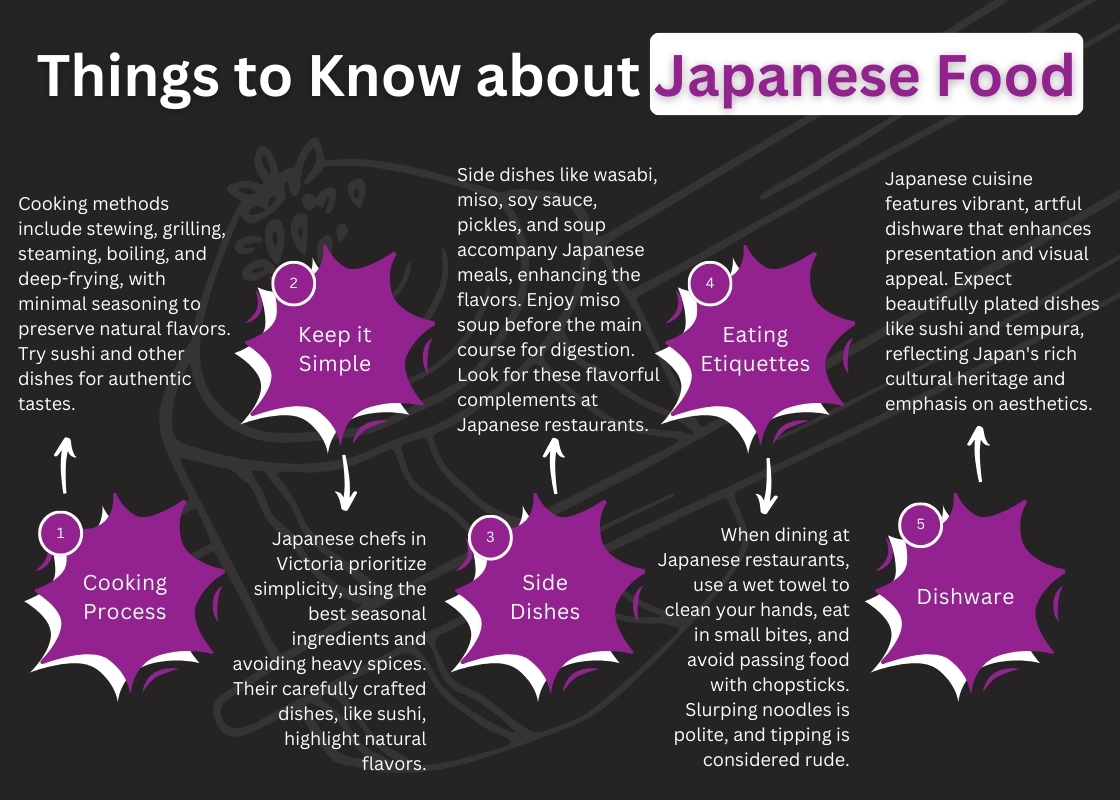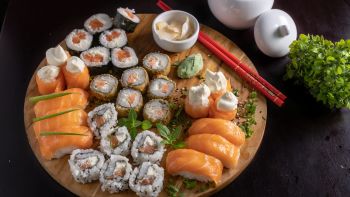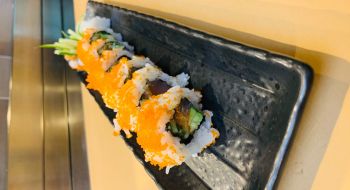In 2013, Japanese cuisine gained notable recognition from UNESCO, marking it as an essential part of world culture. It's not just about the food; it's also about the rich traditions behind it.
Japanese food culture is about using ingredients sustainably and respecting nature. Every step of preparing, presenting, and enjoying food in Japan involves careful consideration. A typical Japanese dish brings together the seasonal and traditional flavours of Japan.
In recent years, Japanese food has become increasingly popular across the globe. Sushi, a well-known traditional Japanese dish, is loved by people worldwide. Whether you're craving sushi or want to explore other Japanese delicacies, you can easily find a Japanese restaurant offering a taste of Japan's culinary wonders.
Japanese cuisine ranks high for its nutritional value. In Japan, great attention is paid to how food is prepared and presented. Traditional Japanese dishes often feature rice, vegetables, meat, and fish, with rice and seafood being staples on the Japanese menu. There's also a strong focus on using ingredients that are in season.
You've come to the right place if you're curious about Japanese food and eating habits. This article will delve into some fascinating aspects of Japanese food culture, from traditional dishes to the reasons why it's worth exploring. Whether dining at a sushi restaurant or trying out other popular Japanese foods, there's so much to discover about the delightful world of Japanese cuisine.
Why are Japanese Cuisines so nutritious?
Japanese cuisine is renowned for its nutritious qualities. The food served in Japanese Restaurants in Victoria is delicious and packed with essential nutrients. One reason for this is the emphasis on using seasonal ingredients, which ensures freshness and maximum nutritional value. Japanese chefs carefully select ingredients in season to create their dishes, making the most of each ingredient's natural goodness.
Fish is a star player in Japanese cuisine, with over 4500 varieties in popular dishes like sushi. Alongside fish, vegetables play a significant role in Japanese menus. However, it's rare to find entirely vegetarian dishes, as many Japanese dishes are cooked in fish broth and topped with bonito flakes for added flavour.
Meat and pork are also commonly used, with raw horse meat, whale meat, tuna fish, and octopus being popular choices. Despite the variety of ingredients, Japanese dishes are typically low in added salts, sugars, and calories. Instead, they boast a rich umami flavour without relying on animal oils for cooking.
Traditional Japanese food is a treasure trove of nutrients such as calcium, magnesium, iron, and vitamins. Additionally, the inclusion of raw foods rich in fibre promotes digestive health. Regularly consuming these nutrient-rich Japanese dishes contributes to overall well-being, supporting brain and heart health. So, it's no wonder People all around the world love Japanese food because it tastes great and is good for you.
Cooking Process:
Japanese food is influenced by Japan's beautiful nature, with its mountains and seas and diverse soils. This impacts the flavours you find in Japanese cuisine. They love using locally grown fruits and veggies.
In Japanese cooking, you'll see various methods like stewing, grilling, steaming, boiling, and deep-frying. Japanese chefs often use water for steaming, boiling, or stewing their ingredients. They prefer raw or lightly cooked food to keep the natural taste intact. You'll find minimal seasoning in Japanese dishes to preserve the flavours of the ingredients. They use soy sauce, miso, seaweed, or bonito flakes to enhance taste.
If you visit a Japanese restaurant, you'll see sushi, a famous Japanese dish, on the menu. They offer traditional Japanese food prepared with care and attention to detail. So, next time you're at a Japanese restaurant, explore its diverse menu and savour the flavours of Japan.
Keep it Simple:
Simplicity is key. Japanese chefs at popular restaurants in Victoria focus on using only the best seasonal ingredients for traditional Japanese dishes like sushi. They keep it simple, avoiding heavy spices like garlic or chilli peppers so that you can taste the authentic flavours of the food. At a Japanese restaurant in Victoria, you'll find a menu filled with popular Japanese foods, each carefully crafted to highlight the natural goodness of the ingredients. Even though servings are small, a full Japanese meal consists of multiple dishes, ensuring you are satisfied. So, whether you're craving sushi or other traditional Japanese dishes, you can expect simplicity and quality at any Japanese restaurant in Victoria.
Side Dishes:
You'll often find side dishes accompanying your meal when you enjoy Japanese food at a sushi restaurant or any Japanese restaurant in Victoria. These side dishes are essential elements of Japanese cuisine, enhancing the flavours of your dining experience.
Popular Japanese food like sushi is often served with traditional condiments such as wasabi, miso, or soy sauce. Additionally, pickles and soup are common in Japanese menus. Miso soup, a beloved traditional Japanese dish, is particularly enjoyed before the main course because it aids digestion.
So, next time you indulge in Japanese dishes, watch for these simple yet flavorful side dishes that complement the rich tapestry of Japanese cuisine.

Eating Etiquettes:
There are essential etiquettes to follow when dining. Before enjoying your meal at a Japanese restaurant like Victoria's sushi spot, wiping your hands with a wet towel is customary. Expressing respect and gratitude for the delicious Japanese dishes served is also valued.
Japanese cuisine emphasizes eating in small bites using chopsticks. Passing food with chopsticks is considered impolite. When enjoying popular Japanese food like noodles or ramen, it's actually polite to slurp them! Traditional Japanese food often includes soups with raw ingredients. It would help to use chopsticks to eat these ingredients first, then drink the remaining soup, like tea.
Chopstick manners are essential at formal events featuring Japanese dishes. Unlike in some cultures, tipping servers at a Japanese restaurant is considered rude. Instead, offer your thanks for the excellent service and delicious food.
Dishware:
Japanese cuisine is all about colourful and patterned dishware. They love to match their plates with what they eat. That's why Japanese restaurants often serve food in beautiful, vibrant dishes. It's like art!
When you look at a Japanese menu, you'll notice the emphasis on presentation. Each dish is carefully plated to enhance its visual appeal, making the dining experience not just about taste but also about aesthetics. So, whether it's sushi, tempura, or other popular Japanese foods, expect them to be served on stunning dishware that reflects the rich cultural heritage of Japan.
Conclusion:
Japanese food is globally renowned for its nutrition, eating habits, and hospitality. If you have yet to experience Japanese cuisine, consider visiting a Japanese restaurant in Victoria to enjoy the authentic flavours.
Sen Zushi stands out as one of Victoria's finest Japanese restaurants! We offer many popular Japanese dishes, including sushi, all made with freshly sourced ingredients. Our menu features traditional Japanese cuisine, prepared and served most authentically. Our staff is highly professional, vaccinated, and dedicated to providing exceptional hospitality.
For more information about our offerings, please see our Japanese menu. If you have any further questions, feel free to contact us.
Savour the taste of Japan at Sen Zushi!


